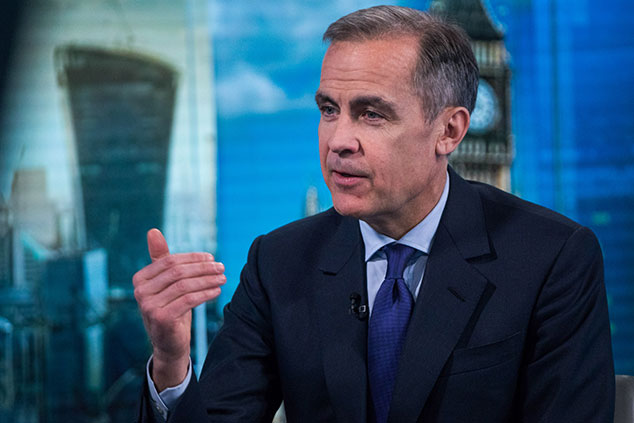
This article is taken from our FREE daily investment email Money Morning.
Every day, MoneyWeek’s executive editor John Stepek and guest contributors explain how current economic and political developments are affecting the markets and your wealth, and give you pointers on how you can profit.
.
In this week’s issue of MoneyWeek magazine
● The star fund managers who fell to earth
● How to spot tomorrow’s big stocks today
● Investing in whisky: liquid profits on the blockchain
● Aviva’s unethical hunt for a loophole in its preference shares
● Shareholders: reclaim your voting rights
● Share tips of the week
This week, over in the US, Jerome Powell is likely to raise interest rates.
Meanwhile, in the UK, Mark Carney is likely to hold his horses. And he might not even set us up for a rate rise in May.
Here’s what to look out for when our central bank bosses stand up this week…
Expect Powell to talk tough to investors
The Federal Reserve is almost certain to raise US interest rates this week. That’s what the market is expecting, and if the Fed failed to raise rates, we’d see a major reaction. Stocks would probably rocket but investors might also start worrying that the Fed was seeing some threat that they were missing.
So unless something really strange happens, we can expect a rate rise. That’s all in the price.
The big question is – what will the Fed say when it does raise rates? The papers are talking about the minutiae of whether there will be three or four rate rises this year. But as I said the other day, that level of detail is not especially relevant.
What really matters is the tone that Jerome Powell strikes. Has the new Fed chairman emerged from his chrysalis, transformed from a deflation-phobic caterpillar into an inflation-averse butterfly? Or is he still more worried making sure that the S&P 500 can keep hitting new records and that the “wealth effect” remains in action?
We’ll soon find out. Or at least, we’ll get a hint. I suspect that Powell’s strategy will be to veer on the tough side, and then soften up as and when the market panics. Talking tough is a way of buying yourself time and space as a Fed governor.
When interest rates are as low as they are now, you have to get creative. A bit of a hawkish tinge to your words is a good way to test the market. It’s like doing a dummy run for an actual rate rise. It’s the sort of thing you can reverse quickly and pretty painlessly if markets throw a hissy fit.
So I’d expect Powell to be quite bullish on the US economy, regardless of the fact that recent US retail spending data was a bit poor. Given the current weakness of the US dollar, he probably feels that he’s got plenty of space to let the market believe he’s more of a hawk than Yellen was.
The reality won’t make itself known until the market has its next 10% correction. That’s when we’ll see whether the “Powell put” really is set at a lower level than the Greenspan put ever was.
The Bank of England is likely to stick with a gloomy outlook
It’s easy to spend all our time focusing on the US – because at the end of the day, it’s the most important global market.
But we have a central bank meeting over in the UK this week too. The big question here is not whether rates will rise this month, but in May (which is when the next set of inflation forecasts is due out).
So will the Bank of England be hawkish, or is it likely to be more gloom?
Well, tomorrow, we get inflation data – the consumer price index (CPI) has been rising at an annual rate of 3% or more for the past five months. Capital Economics reckons that this will start to tick down from here, as “the peak impact of sterling’s past depreciation should now have passed”.
If CPI does ease off, then – while it’s still above target – that takes a bit of pressure off the Monetary Policy Committee. Equally, the Office for Budget Responsibility (OBR) gave a pretty grim reading on the UK economy at Philip Hammond’s spring statement last week.
In short, there’s no rush for the BoE to turn optimistic on the UK economy. And it doesn’t seem to be in a hurry to raise rates in any case. So it seems unlikely that we’ll get a particularly hawkish BoE on Thursday (which could be bad for sterling, if you happen to be trading currencies).
However, there are a few wild cards in there. Capital Economics reckons the OBR is overly gloomy. That will take a while to come through, but given the huge downer that everyone seems to have on the UK right now, we could see some pleasant surprises on the upside over the next few months or so.
The ideal, of course, is that come the Autumn Statement, a well-behaved Hammond finds that he has a bit of fiscal breathing space – particularly if the stickiest bits of Brexit have been nailed down.
Meanwhile, the UK is the most hated market in the world, according to the regular Bank of America Merrill Lynch survey. That makes it look very intriguing as a destination for a contrarian punt. That said, I think you still have to be very picky about what you actually buy here. A lot of companies look as though they are overstretching themselves to meet dividends payments, for example.
So we’ll be looking at the most sensible buys in a forthcoming issue of MoneyWeek magazine very shortly (pick up a subscription now so that you don’t miss it).